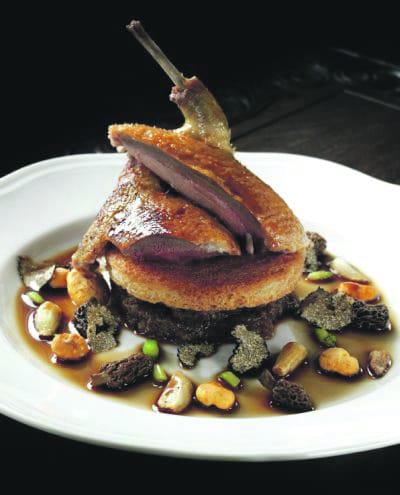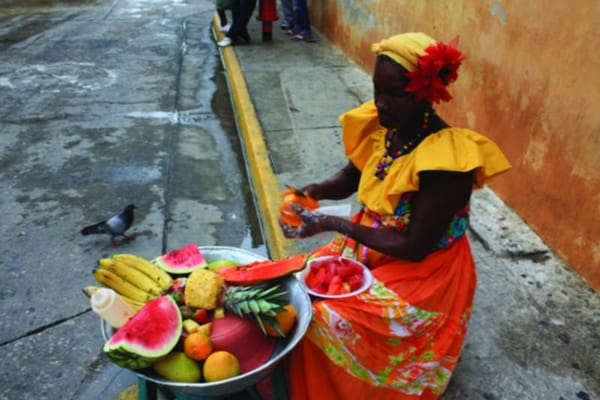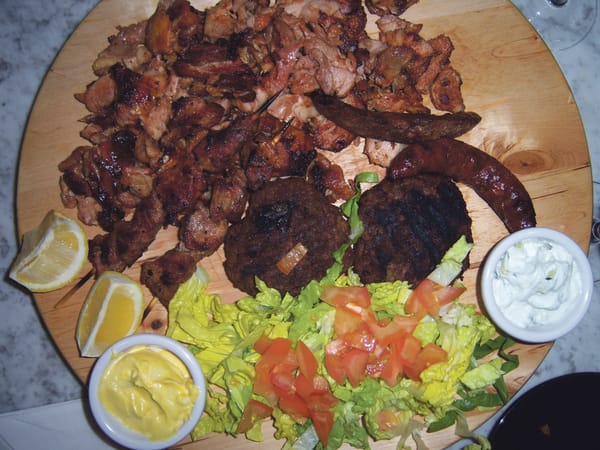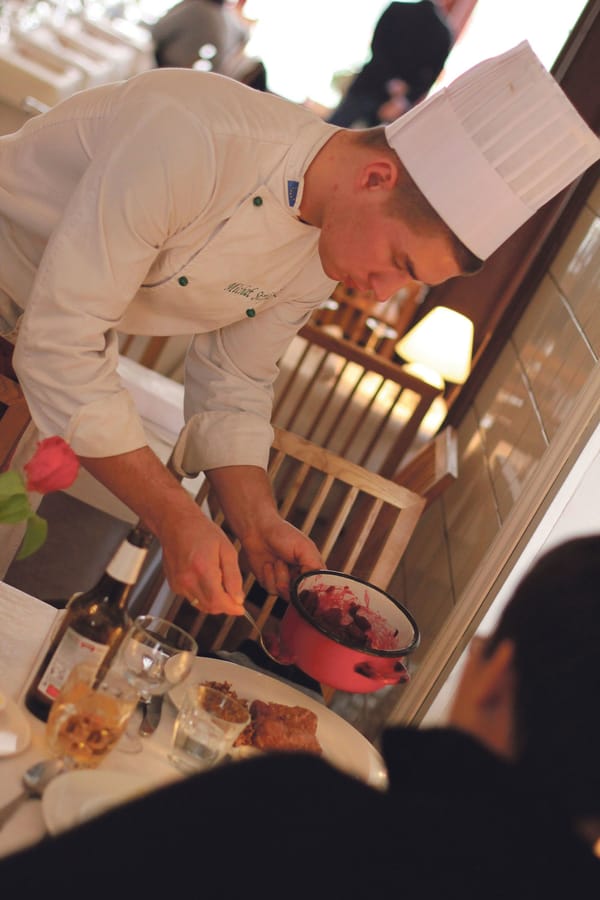Apocalypse Chow in Ho Chi Minh
Peter Quicke and Jamie Rickman share their Vietnamese food know-how
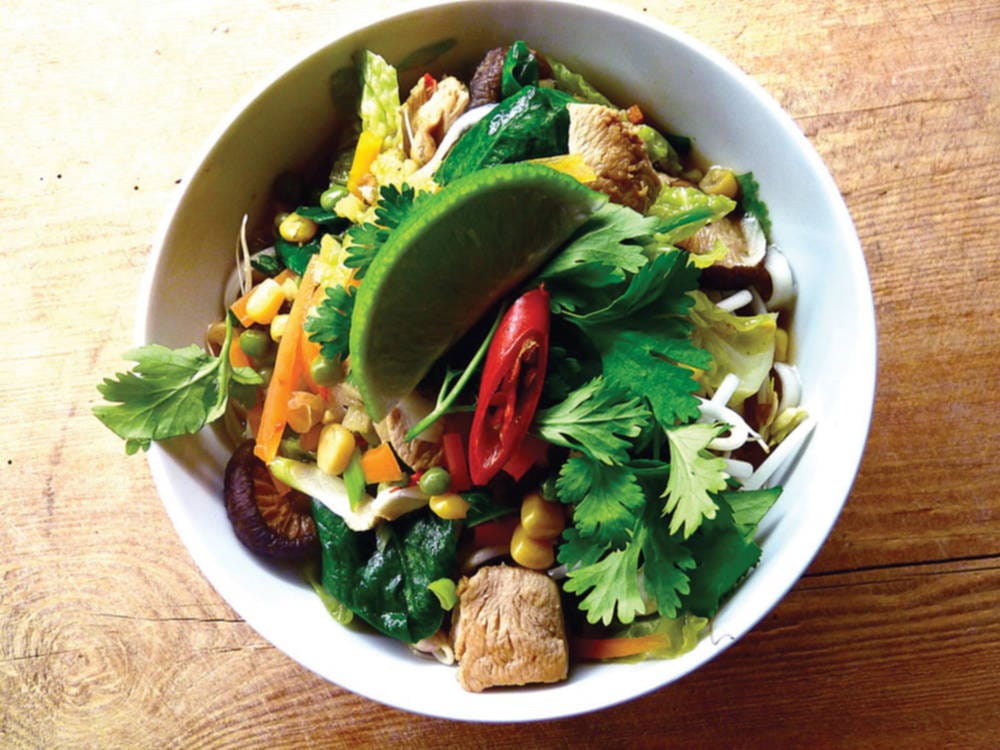
It’s breakfast time in Vietnam, the sun’s not up yet but you can hear the clashing of pots and pans and the calling of the street vendors hawking all manner of foods from greasy deep fried spring rolls to crystal clear broths. Families congregate around their tiny matriarchs, little old ladies pouring out steaming bowls of noodle soup from cauldrons larger than themselves. They eat together, squatting outside their front doors, calling to their neighbours as the dawn breaks. Food is deeply rooted in the Vietnamese culture and is far more than just sustenance. The principle of Yin and Yang is even applied to the preparation of food; ingredients are put together in harmony with season, climate and the physical well-being of the diners. Food brings the family together; to be invited to share a meal in Vietnam is extending the hand of friendship and welcome.
Fish sauce, soy sauce, fish sauce and more fish sauce. This is the definitive taste of Vietnamese cuisine, the salt and pepper of their table. Vietnamese food is pure and vibrant, its basic food bought to life by herbs, spices and heaps of chilli. The most popular dishes are fresh or fried spring rolls, dumplings – sweet or savoury filled with minced meat or red bean paste, and barbequed meats all sold on the street, oh and pho, the cult of pho.
Pho, pronounced ‘fer’, the ubiquitous Vietnamese dish is the embodiment of their food. The flourishes vary from region to region but the basic idea stays the same; a bowl of aromatic noodle soup filled with tasty things: mung beans, leaves, and succulent meat finished with chilli and lime. It’s simple, filling and so delicious, Hanoi eats it for breakfast, lunch, and dinner. Creamy rice noodles temper the chilli and the lime cuts through the boiled meat; usually beef or chicken.
While Pho remains a staple, there is so much more to be tried. Sandwiched between India and China, previously colonised by France and plagued by missionaries from around the globe, Vietnam remains a fiercely independent country and has thrown off the shackles of all these nations while pillaging their recipe books to create the tastiest fusion dishes in the world. A surprising sight are French baguettes under the arms of cyclists. Filled with cold cuts of sausage meat, Vietnamese mayonnaise, pickled vegetables and laughing cow cheese - they make the perfect afternoon snack.
Coffee is another national institution: hot or cold and strong enough to wake the dead, it is sweetened with condensed milk. The best coffee is brewed from beans diligently processed by the digestive tract of the civet cat known as cafe cut chon or fox-dung coffee.
Beer, costing between 13p and 25p a glass, is another remnant of Vietnam’s colonial past. It is brewed in some of the best micro-breweries outside of Bavaria with each town selling its own version of Bia Hoi, usually from old plastic bottles. Five pounds in your pocket could get the whole of Reynolds bar drunk.
With over 3000 km of coastline, seafood is also a staple. Squid, prawns, shark, ray and practically anything else that can be harvested from the depths is consumed with gusto.
And of course the famous fish sauce, made by fermenting fish in pots under a hot sun for days on end, left long enough this produces an intensely nutty, cheesy flavour that forms the essence of many Vietnamese dishes.
For a food adventure try beating snake heart, a delicacy in Vietnam, it’s thought to improve potency when washed down with snake bile and snake blood. Also, rice wine is used to pickle birds and scorpions and used to cure everything from the common cold to a broken heart. Balut is another delicacy, consisting of a fertilised duck egg cracked open, seasoned with salt and pepper and gulped down bones feathers and all.
So where do you go in London for an authentic Vietnamese meal on a student budget? Old Street and Kingsland Road in east London have some of the finest around. We especially recommend Cay Tre. Unfortunately you can’t order snake hearts, but it does serve a wide variety of delicious meat and vegetarian dishes all reasonably priced and big enough for a hungry student. It can get quite busy so it’s a good idea to book ahead, the service is quick and the atmosphere bustling. Our favourite dishes were the sizzling seafood platter, and beef chunks. And the mixed starter is delicious and fresh, seasoned beautifully with peanuts and chilli and sweet fennel.
There are so many tastes and flavours in Vietnamese cuisine that there’s something to satisfy any mood or hunger, and is great for the health-conscious, vegetarians and other undesirables. Feeling inspired and creative? Try our recipe for delicious chicken Pho, Pho Ga, and get eating!

